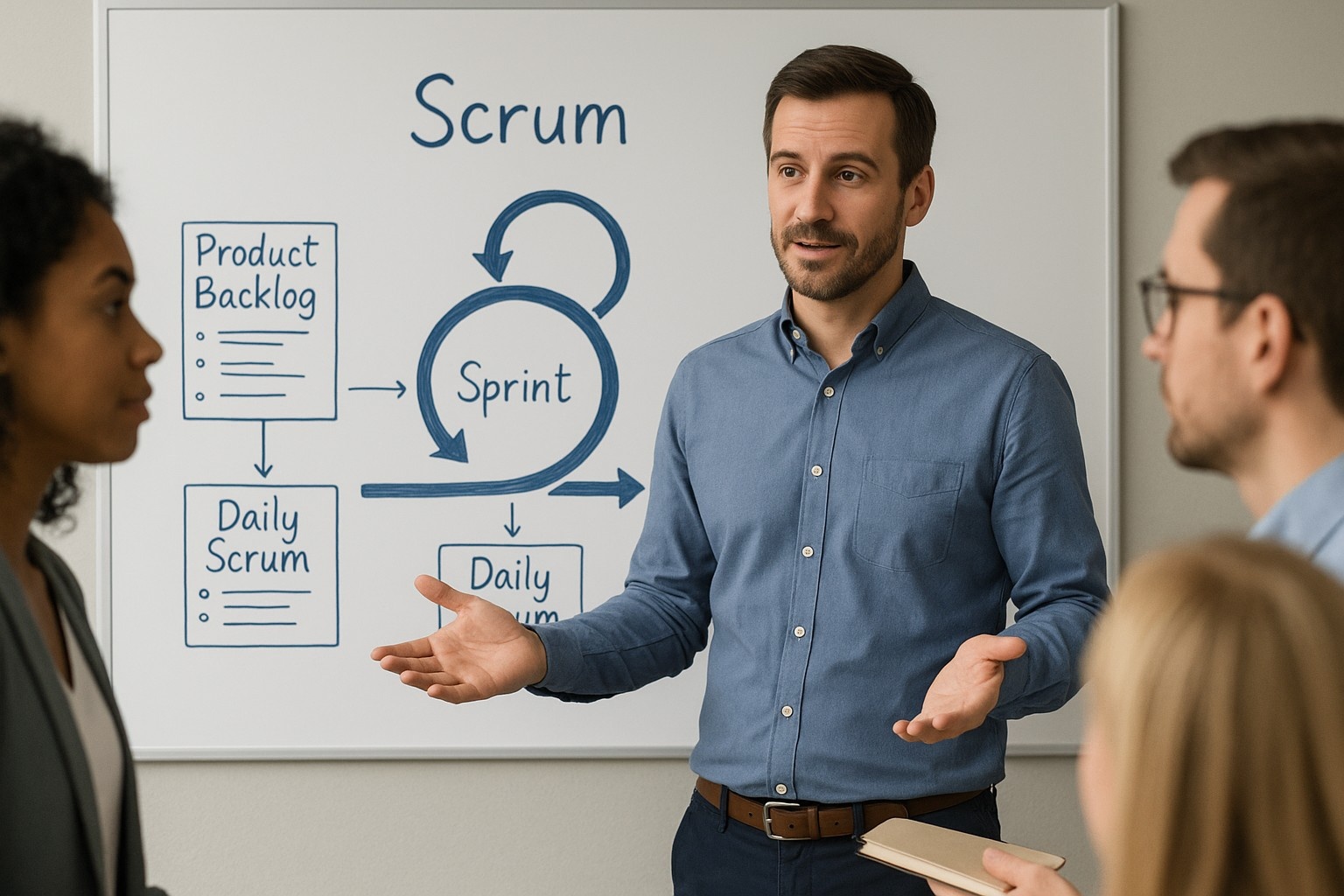In the realm of Agile project management, two roles stand out due to their significance in driving successful outcomes: the Scrum Master and the Product Owner. At UC Agile, we recognize the unique contributions of these roles in our Agile journey. This blog post aims to shed light on the differences between the Scrum Master and the Product Owner, helping you understand their unique responsibilities and how they collaborate to deliver value.
Understanding the Roles:
1. Scrum Master: The Scrum Master is a servant-leader for the Scrum Team. They help everyone understand Scrum theory, practices, rules, and values. The Scrum Master ensures that the team adheres to Scrum methodology, facilitates communication, and helps the team overcome any obstacles.
2. Product Owner: The Product Owner is responsible for maximizing the value of the product resulting from the work of the Development Team. They manage the product backlog, prioritize tasks based on business value, and act as a liaison between the team and the stakeholders.
Scrum Master vs Product Owner:
1. Roles: The Scrum Master is a facilitator and coach for the team, ensuring smooth execution of the Scrum process. On the other hand, the Product Owner represents the customer’s interests and ensures that the team delivers value to the business.
2. Responsibilities: The Scrum Master is responsible for removing any impediments that hinder the team’s progress. They also facilitate Scrum events and promote communication within the team. The Product Owner, however, is responsible for managing the product backlog, prioritizing tasks based on business value, and communicating with stakeholders about the product’s progress and future iterations.
3. Authority: The Scrum Master has the authority to change the team’s working process to make it more efficient and productive. The Product Owner has the authority to prioritize and manage the product backlog, ensuring that the team is working on the most valuable features first.
4. Interaction: The Scrum Master interacts mainly with the development team, helping them understand and follow Scrum practices. The Product Owner interacts with both the team and the stakeholders, ensuring that the team understands the product vision and that the stakeholders are kept informed about the product’s progress.
5. Communication: The Scrum Master communicates with the team about their responsibilities and helps them understand the Scrum framework. The Product Owner communicates the product vision and requirements to the team and keeps the stakeholders updated on the product’s progress.
6. Time Commitment: The Scrum Master is committed to the team and the Scrum process, ensuring that the team is working effectively and efficiently. The Product Owner, on the other hand, spends their time managing the product backlog, communicating with stakeholders, and working with the team to deliver a valuable product.
While the Scrum Master and Product Owner have distinct roles and responsibilities, they both play crucial roles in the success of Agile projects at UC Agile. They work together to ensure that the team is productive, the product delivers value, and the stakeholders are satisfied. Understanding the difference between the Product Owner and Scrum Master is key to appreciating how these roles contribute to the successful implementation of Agile principles.



